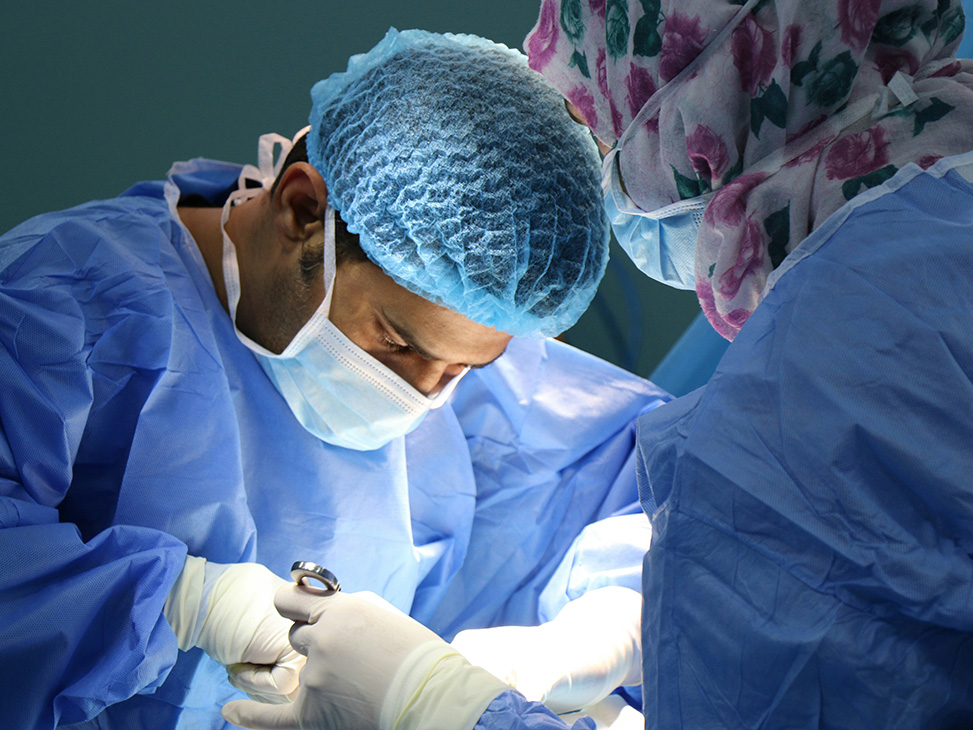Home / Surgical Solutions / Nipple Grafts

Many patients worry about nipple skin graft survival. It’s helpful to understand how skin grafts work and to know what you can do to maximize nipple graft survival. In our experience, they are completely successful about 98% of the time.
Skin grafts are rather miraculous things! We can take a piece of a person’s body, remove it from their body, and put it somewhere else on the body where it will stay and survive. It’s an amazingly reliable procedure. In our practice it is extremely rare to lose a considerable portion of a skin graft for any reason, and our surgeons have not had a patient completely lose any of the hundreds of skin grafts performed.
First, we gently remove the outer layer of skin from the location where the graft is being relocated. Think of it as skinning your knee pretty deeply. The skin graft is then placed on the ‘open’ area.
A few days after placement, the graft survives on the dissolving nutrients coming from the deeper layers directly into the skin graft. It can live that way for about 3-4 days. During that time, the body develops new blood vessels that grow into the skin graft. If that process is unsuccessful, the skin graft will fail. To make sure the graft has solid and continuous contact with the body during this process, the surgeon places a bulky ‘bolster’ dressing on the graft that is tied down to the skin.
When the surgeon removes the outer bolster dressing about 1 week after surgery, the grafts are a little bit delicate, but already have a blood supply. During days 7-21 after surgery, the graft gains a lot of strength, and is quite resilient after 21 days. By 42 days (6 weeks) after surgery, the grafts are very strong and usually have the strength of non-grafted tissue.
It can take up to a year or more until the final healing of your nipples is complete and the redness around the areolas has disappeared. When nipples heal they can look worse before they look better, especially around 14-21 days after surgery.
Threats to Skin Graft Survival
Anything that impairs the ingrowth of blood vessels can impact the survival of a skin graft. As you read above, the arrival of new blood vessels within a tight time frame is an important component of skin graft survival. Here are the various issues that can cause a problem:
Your chances of skin graft success are greatest if you’re healthy, if the skin graft is well prepared, and the thick bolster dressing is applied to prevent shear force. In our experience, it’s a better than 98 % chance of having a successful full thickness nipple graft.
If you have additional questions please don’t hesitate to call our office. A member of our staff would be happy to go through any further details with you over the phone, or set you up with a personal or virtual consultation with our surgeons.
When nipples heal they can look worse before they look better, especially around 14-21 days after surgery. To protect the graft from shear force, during surgery we place a thick dressing on top that securely presses the graft down.
A compression garment is often used, since it helps to keep the graft from being bumped to the side – (either during sleep or daily activities). In our experience, your skin grafts have a 98 % chance of success.
It can take up to a year or more until the final healing of your nipples is complete and the redness around the areolas has disappeared.
Our team of expert surgeons provide personalised, safe surgical treatments across a full range of procedures. Every experience is tailored to your individual needs.

Choosing the right incision technique for chest masculinization surgery is a deeply personal decision—and one that depends on your anatomy,

FTM/N chest surgery is a life-changing procedure that requires careful planning and consideration in advance. Because FTM/N chest reconstruction is a

Whether you’re considering cosmetic surgery, weight loss surgery, or any surgical procedure — one of the most important decisions you’ll
Website by Creo Design, part of The Solutions on Demand Group